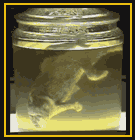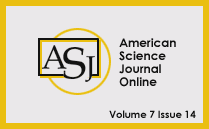

 |
 |

April 15,1932 - Professor Jean Paul Gass� is part of a French  investigating commission out to conduct a large-scale study of the Nile coastal ecosystem between Aswan and the city of Alexandria on the Nile River. It was during this assignment that Gass� encounters the Seaman. investigating commission out to conduct a large-scale study of the Nile coastal ecosystem between Aswan and the city of Alexandria on the Nile River. It was during this assignment that Gass� encounters the Seaman.
December 7,1932 - Alexandria, Egypt, Gass� comes across a group of returning fishermen and notices a strange fish in their catch. He learns from the local villagers that it was called "Seaman."
December 13,1932 - Gass� procures some Seaman eggs and returns to Paris.

January 18,1933 - Gass� starts to conduct his breeding experiments with the Seaman eggs in a Paris Lab.
 February 12,1933 - The 25 day breeding experiment ends in failure as the Seamen died.
February 14,1933 - Gass� dissects a sample and begins to write a specimen document.
April 17,1933 - Gass�s historic thesis was printed in Annalen der Biologik, a biological annual report. The historical document was called, �The Examination of the Evolution of Living Creatures as Seen through Seaman�s Adaptation to His External Environment and Speed of Organic Change.�
May 19,1933 - Gass�'s theory (without a living sample) is ignored by mainstream science. Being seen as a publicity stunt, the newly appointed director of biological studies fires Gass�.
1934-1945 - After his dismissal, news of Gass�s whereabouts and activities were unknown. Details during these years are sketchy at best. There were rumors that Gass�s trail could be traced to some remote islands in Southeast Asia. It is known that he escaped the shadows of war and met up with his colleague, Kimo. This is gathered from the Indian ink drawings of Seaman Dissections discovered in the Masuda storehouse. It became clear that sometime during these years they were able to conduct further research on Seaman's evolution, quite possibly even up to the creature walking on all fours. Unfortunately, very little hard data or evidence exists to substantiate these findings.
March 1996 - Anthro-Bio Archeological Research Institute established by the French government and headquartered in Paris. The institute is based on the work of the Professor Jean Paul Gass�, the first scientist credited with he discovery of the Seaman. Most of the modern day research of Seaman specimens has taken place here.
 July 22,1997 - A living specimen of Seaman is caught just off of Alexandria by a boy fishing
August 25,1997 - Professor William Southerland, director of the  Anthro-Bio Archeological Research Institute, Paris France, and his team makes announcement that there was a strong possibility that �Seaman� was closely related to the origin of ancient Egyptian civilizations. Anthro-Bio Archeological Research Institute, Paris France, and his team makes announcement that there was a strong possibility that �Seaman� was closely related to the origin of ancient Egyptian civilizations.
 October 6,1998 - One of Gass�s formaldehyde specimens is discovered at the University of Paris October 6,1998 - One of Gass�s formaldehyde specimens is discovered at the University of Paris
February 15,1999 - Parts of Gass�s journal and notes turn up in the Masuda family storehouse in Matsuzaka City in Mie Prefecture, Japan.
July 13, 1999 - Professor Kendare Takahashi, Director of the Anthro-Bio Archeological Research Institute of Japan, becomes the first person to successfully breed Seaman eggs in captivity.
 September 1999 - Seaman is presented at aquariums across Japan
July 10,2000 - Expedition team, led by American explorer Andrew Resnick, embarks for Egypt in the first major field research of the Seaman in the wild.
|



